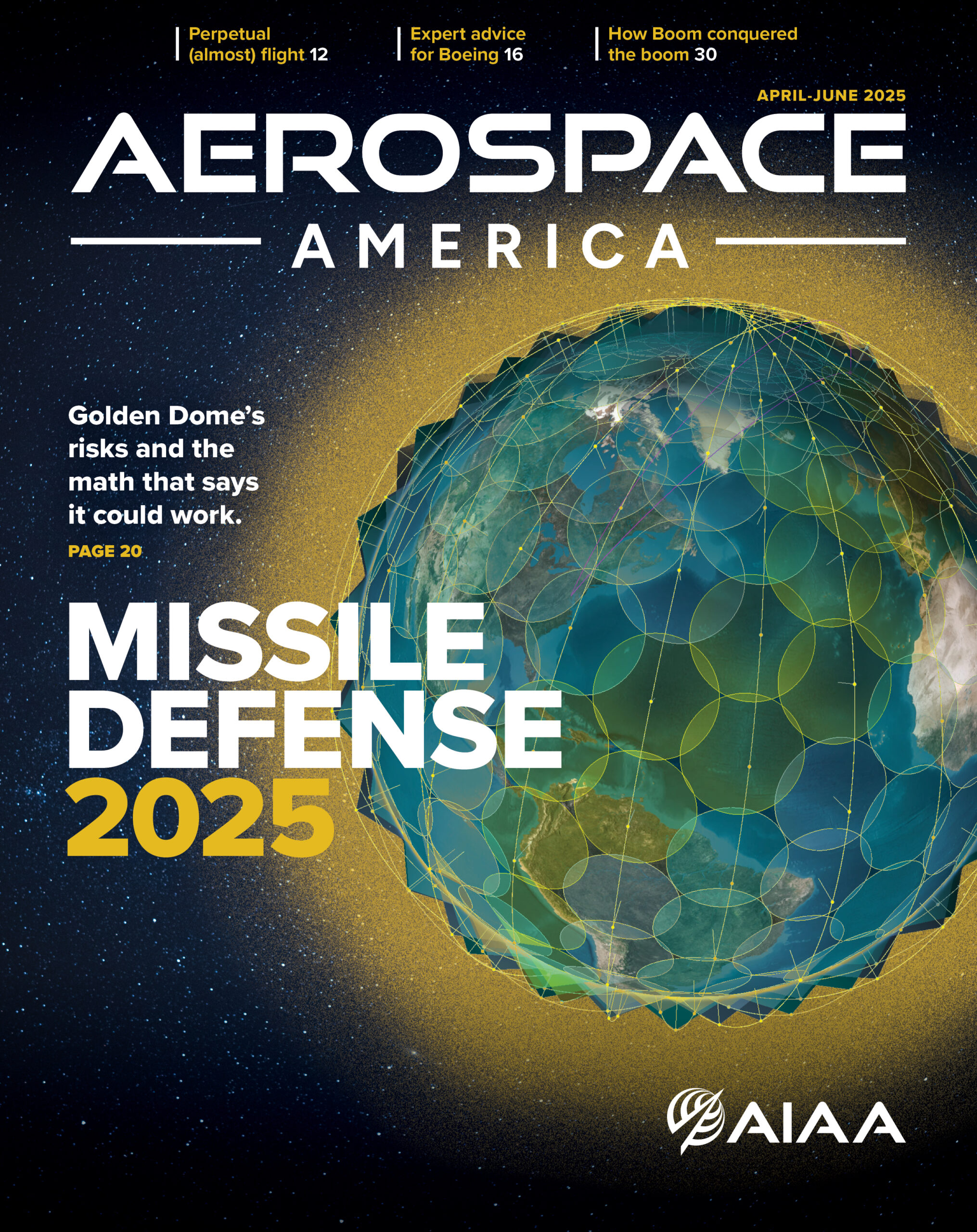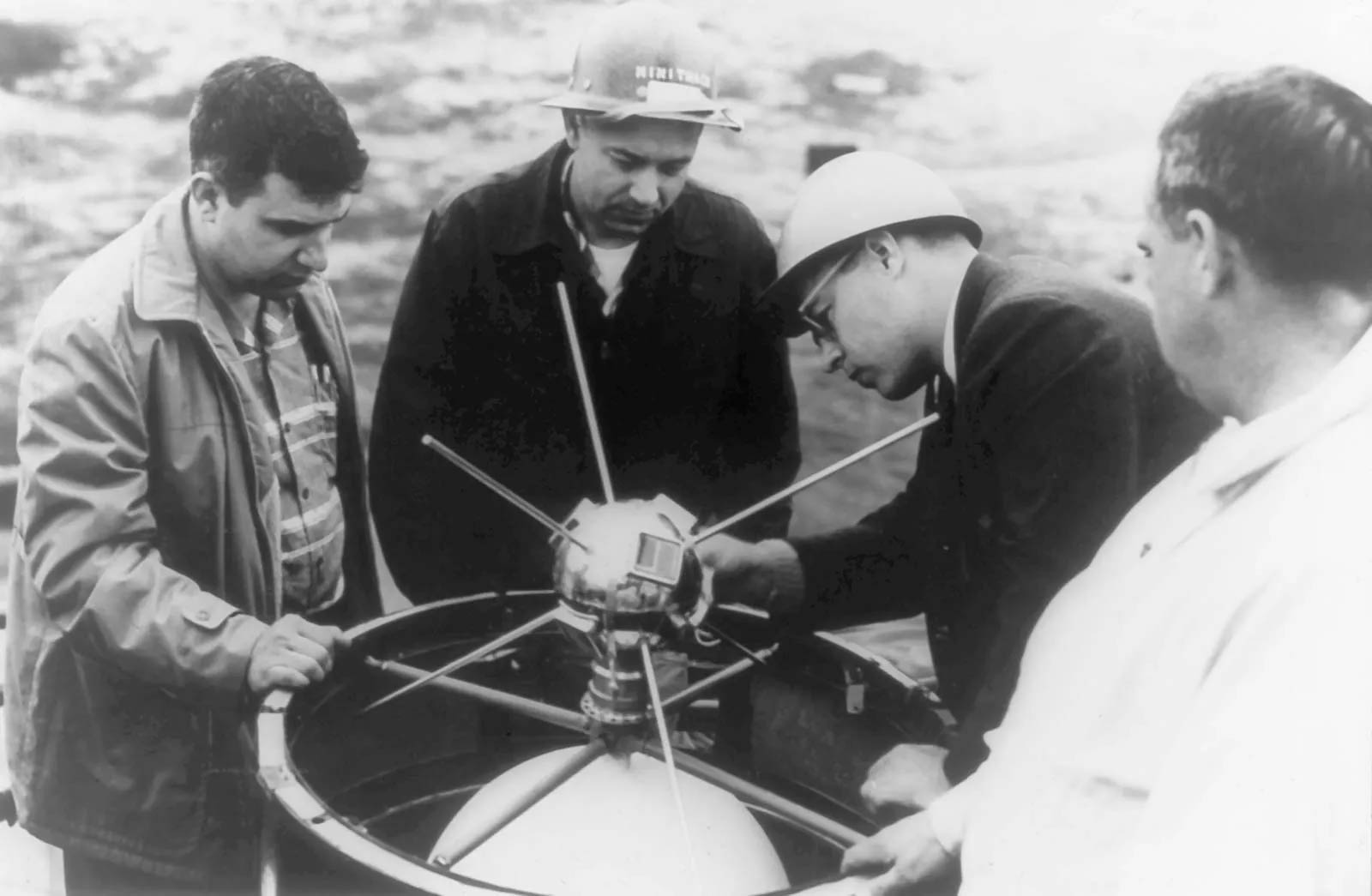Stay Up to Date
Submit your email address to receive the latest industry and Aerospace America news.
Authors of a technical paper describe how Vanguard 1, the second U.S. satellite, could be retrieved, analyzed and displayed at one of the Smithsonian museums
AIAA SCITECH FORUM, ORLANDO Fla. — The Vanguard 1 spacecraft narrowly missed out on the distinction of being the first U.S. satellite, an honor that of course goes to Explorer 1, which was launched two months earlier in January 1958. It is, however, the first satellite to convert sunlight to electricity.
Now, the grapefruit-sized aluminum sphere with spike-like antennas could gain another distinction. Engineers and a research analyst from Virginia-based consulting firm Booz Allen Hamilton have suggested that Vanguard 1’s original owners, the Naval Research Laboratory and later NASA, could capture it in orbit and return it to Earth. They outlined how this might be done in the paper, “Retrieving History: Options for Returning Vanguard 1 to Earth,” presented at the conference here.
Recovering satellites isn’t an entirely new concept, but if the mission is undertaken and succeeds, Vanguard 1 would be the oldest satellite ever recovered.
NASA demonstrated one technique for recovering satellites in 1984, when spacewalking shuttle astronauts snared two malfunctioning communications satellites one at a time and reeled them into the Discovery orbiter’s cargo bay for the flight home. Despite that success, the idea of grabbing wounded or dead satellites and bringing them home never took off. Now, however, interest is on the rise, given the orbital debris problem and the desire to extend the lives of satellites by repairing or refueling them in orbit. That second option involves similar techniques.
Vanguard 1 is the perfect combination of “enormous historical value” and technical challenge for demonstrating techniques needed in the growing servicing field, says Matt Bille, a Booz research analyst based in the company’s Colorado Springs office and the lead author. The satellite still exists only because it is in a highly elliptical orbit with minimal atmosphere drag, while Explorer 1 and the Soviet Union’s Sputnik satellites all fell into the atmosphere within months to years of their launches in 1957 and 1958.
The idea of recovering Vanguard 1 came to Bille early last year. “It just sort of popped in my head that, well, this isn’t an unreachable orbit. Why don’t we go get it and bring it to the Smithsonian?” he tells me.
But before it’s taken to the Smithsonian, space material experts would surely take a look at it. “They want to see how it’s held up. Has it been hit? Is the structure holding together? What’s the status of the metals?”
Bille and his co-authors emphasize that this isn’t a formal business proposal or an official Booz project. Bille shared the paper with the Naval Research Lab, which built and owns the satellite, and with NASA, which took over responsibility for Vanguard 1 in the late ’50s. So far, he says, there have been no additional discussions, but he learned that both organizations are separately looking into the possibility of a recovery mission.
NASA and NRL did not respond to requests for comment.
“We want to do anything we can to try to be the catalyst for” bringing Vanguard home, Bille says. Given their ownership roles, he believes that NRL and NASA would lead or at least be involved in any recovery effort, and he predicts that the U.S. Space Force would also be interested in contributing technology or funding, given its interest in on-orbit servicing. “Obviously, we are not in the business of running space missions, but we hope we have started the discussion.”
The authors believe the best option would be a two-part mission.
First, Vanguard’s condition would need to be assessed, likely by a spacecraft equipped with cameras to take images and other measurements at a close range. Ground- or space-based radars and telescopes are another option, but likely won’t be able to image Vanguard at “the resolution necessary to make the kind of assessments that we would need,” says Chris Vanwy, an associate in Booz’s space division and one of the authors.
The paper mentions a handful of existing spacecraft that have demonstrated this observing technique, including Astroscale Japan’s ADRAS-J. That spacecraft spent much of last year approaching and inspecting a dead rocket upper stage in preparation for a planned deorbiting later this decade. The Japan Aerospace Exploration Agency, JAXA, is funding that deorbiting demonstration.
A big question is whether it’s even feasible to grapple or capture Vanguard in some manner, given that its multiple antennas “are now presumed to be too fragile to use as grab or attachment points,” the paper reads. Also, “the actual satellite body has no docking mechanism or easy grab point.”
Michael Ferguson, lead engineer for Booz Allen Space Solutions and another of the authors, points out another potential challenge: Like many early satellites, Vanguard is spin-stabilized. “So it might not only be spinning on an axis, but doing some kind of tumbling,” which could make a capture difficult if not impossible.
“Between determining the condition of the spacecraft and retrieving it, there would need to be a decision made at the right levels and organizations as to whether or not to indeed pursue a retrieval,” Ferguson adds.
If the assessment shows that retrieval is possible, the next question would be whether to use a semi-autonomous craft, or send a human crew to grapple it with some kind of robotic device.
For the robotic option, an upcoming DARPA-funded demonstration might illustrate one technique: NRL is in the midst of attaching a set of robotic arms, plus accompanying cameras and software, to a spacecraft frame, or bus, built by SpaceLogistics, a Northrop Grumman subsidiary. Plans call for launching it to geosynchronous orbit later this year, where it will approach a handful of defunct communications satellites and, with its robotic arms, attach fuel jetpacks to them. Perhaps a similar bus could grasp Vanguard.
For the crewed scenario, one possibility would be to send a modified SpaceX Crew Dragon capsule, similar to the one in which billionaire Jared Isaacman and three other passengers rode in September. During that flight, Isaacman and SpaceX engineer Sarah Gillis took turns partially exiting the nose of Crew Dragon in a “stand-up EVA” to test their new SpaceX suits.
Given that the nose opening was large enough for Isaacman and Gillis to squeeze through, the authors suspect a crew could bring Vanguard 1 into a Dragon that way via some kind of robotic device and package it in a container for the return trip.
Bille notes that a manual retrieval of the satellite “would probably be more precise” but also would likely increase the cost of the mission.
Speaking of the cost: That would depend on a variety of factors, including how many spacecraft are involved, to what extent existing technology can be applied and how soon the organizations overseeing the recovery would like to launch. “This is not a $50 million mission, but it’s not a $5 million project,” Bille says.
“There’s a lot of options to be studied here in more depth than we were able to do in just the paper. But the point is, it’s a plausible mission.”
About cat hofacker
Cat helps guide our coverage and keeps production of the print magazine on schedule. She became associate editor in 2021 after two years as our staff reporter. Cat joined us in 2019 after covering the 2018 congressional midterm elections as an intern for USA Today.
Related Posts
Stay Up to Date
Submit your email address to receive the latest industry and Aerospace America news.




